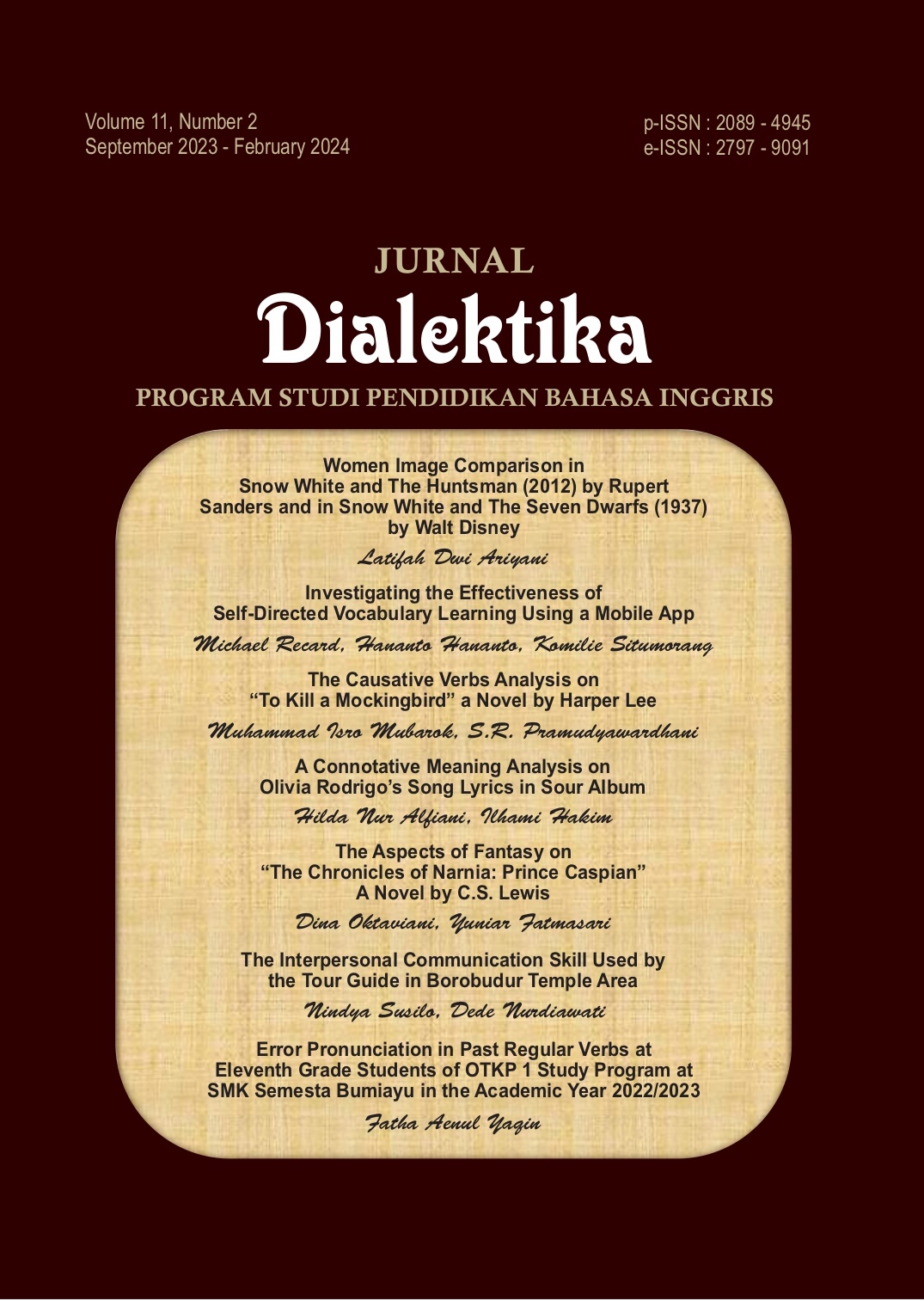The Causative Verbs Analysis on "To Kill a Mockingbird" a Novel by Harper Lee
DOI:
https://doi.org/10.58436/jdpbi.v11i2.1764Abstract
A causative verb is employed to indicate that the subject is not directly responsible for the action taking place. The choice to analyze causative verbs stems from the writers' interest in understanding how native English speakers structure these verbs, as each causative verb—have, get, make, and let—possesses a similar meaning but differs in usage. Consequently, the aim of this research is to determine the forms and types of causative verbs utilized in the novel "To Kill a Mockingbird." The research adopts a descriptive qualitative method. The findings reveal a total of 55 forms and types of causative verbs in the novel. Specifically, the forms of causative verbs are distributed as follows: "have" is found four times, "get" is found three times, "make" is found 20 times, and "let" is found 28 times. Among all the identified forms, "let" is the most frequently employed causative verb in the novel. Furthermore, the analysis of the types of causative verbs yields a total of 55 instances. Among the active causative verb types, "have" is found three times, "get" is not found, "make" appears 20 times, and "let" is found 28 times. In contrast, the passive causative verb types include "have" found once, "get" occurring three times, "make" not found, and "let" not found in the novel. Among the active causative verb types identified, "let" is the most prevalent, while among the passive causative verb types, "get" is the most frequent.
Keywords: Causative Verb, Analysis, To Kill a Mockingbird, Novel, Harper Lee

